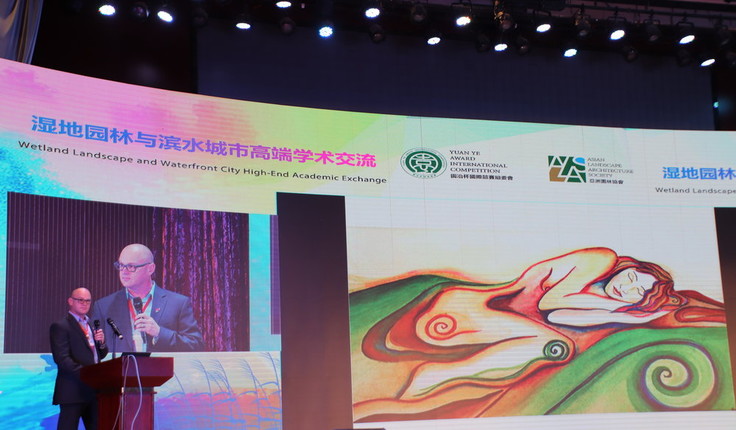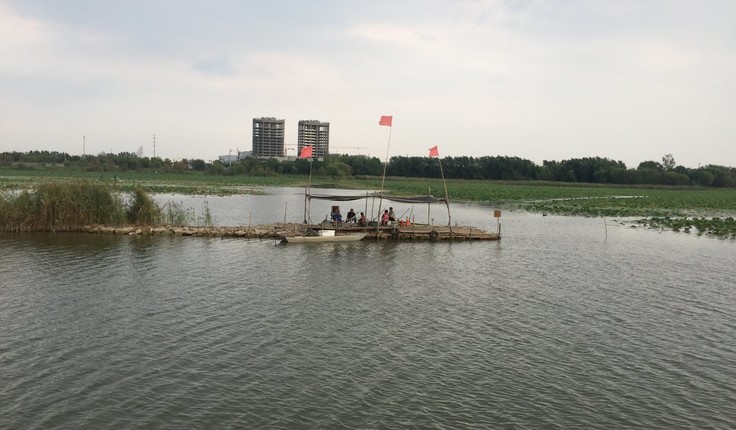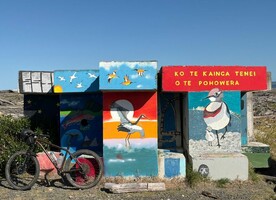News
Wetlands and waterfronts
Posted 01 10 2018
in News

NZILA President Brad Coombs presented the Kopupaka Reserve project
NZILA President Brad Coombs has just returned from presenting a paper to the Hengshui Wetland Landscape and Waterfront City High End Academic Exchange, in the Hebei Province, China.
The focus of the conference was on learning advanced methods for the development of wetlands and waterfront areas from the suite of international and Chinese experts that gathered. Coombs presented the Kopupaka Reserve project, a multi-functional stormwater and recreation reserve, designed and built in advance of the Westgate and Massey Town Centre development in West Auckland.
Kopupaka Reserve won the World Landscape of the Year Award at the 2016 World Architecture Festival (WAF) in Germany and showcases the integration of tested stormwater treatment methods with overlapping water storage, ecological and recreational function. The last three winners of the WAF World Landscape of the Year award have all been constructed wetland projects – two in China and one in New Zealand. There was strong resonance between the objectives of the conference and the presentation of Kopupaka Reserve.


The Chinese government is investing in expert advice to develop better environmental outcomes in and around the growing urban areas in the north east of China. The two-day conference included numerous presentations from landscape architects, ecologists, engineers and city officials on wetland and waterfront developments. The program also included a visit to the 2017 Hengshui Garden Exposition site and a boat trip on Lake Hengshui – the largest freshwater lake in the dry north east corner of China.
The wetland and waterfront theme of the conference explored designing for resilience at the edge between the land and water. Most of the largest cities in the world are right on the edge of the water – rivers, lakes and oceans. The Fukushima earthquake seven years ago showed how devastating the effects of a coastal edge disaster can be on urban communities. Bangkok City is sinking at a rate of 5 cm per year and the sea level is rising to meet it. If nothing is done, then Bangkok will be underwater in less than 15 years. These examples are just two of the many around the world that require attention of landscape architects to ensure that waterfront cities are resilient to climate change and natural disasters.
The scale of the pollution problem is much bigger in China, which means the scale and effectiveness of delivering a successful solution is also a much bigger opportunity. If we can take our innovative ideas and scale them up to Chinese proportion, then we can lead ideas for better environmental solutions.
After a couple of days of sightseeing in Beijing after the conference, I’ve come back to New Zealand with a fresh perspective on the influence landscape architects can have on saving some of our iconic waterfront cities.
Share
19 Dec
Christmas break 2025

see you from 12 January
As we wrap up another big year, we’re taking a moment to pause, breathe, and enjoy a well-earned break. Meri …
18 Dec
President’s update

December 2025
Earlier this month I attended the Ngā Aho Māori Design Professionals Wānanga-ā-Tau at Te Aranga Marae in Flaxmere. Tuia Pito …
18 Dec
Awards 2026 update

An update as we warm up for the 2026 Awards kaupapa. Submissions will open in March and will run for …
Events calendar
Full 2025 calendar